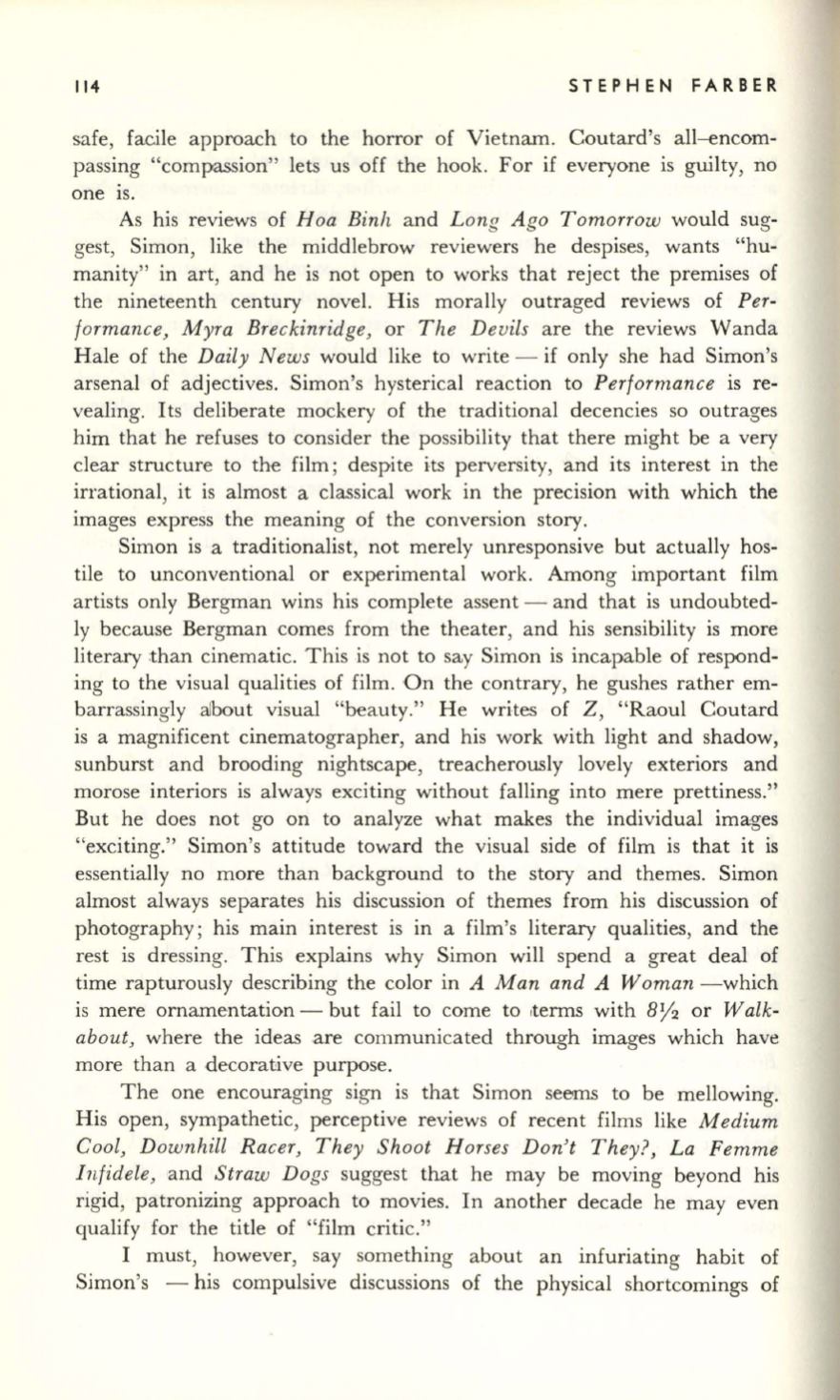
114
STEPHEN FARBER
safe, facile approach to the horror of Vietnam. Coutard's all-encom–
passing "compassion" lets us off the hook. For if everyone is guilty, no
one
IS.
As his reviews of
Hoa Binh
and
Long Ago Tomorrow
would sug–
gest, Simon, like the middlebrow reviewers he despises, wants "hu–
manity" in art, and he is not open to works that reject the premises of
the nineteenth century novel. His morally outraged reviews of
Per–
formance, Myra Breckinridge,
or
The De vils
are the reviews 'Wanda
Hale of the
Daily News
would like to write - if only she had Simon's
arsenal of adjectives. Simon's hysterical reaction to
Performance
is re–
vealing. Its deliberate mockery of the traditional decencies so outrages
him that he refuses to consider the possibility that there might be a very
clear structure to the film ; despite its perversity, and its interest in the
irrational, it is almost a classical work in the precision with which the
images express the meaning of the conversion story.
Simon is a traditionalist, not merely unresponsive but actually hos–
tile to unconventional or experimental work. Among important film
artists only Bergman wins his complete assent - and that is undoubted–
ly because Bergman comes from the theater, and his sensibility is more
literary than cinematic. This is not to say Simon is incapable of respond–
ing to the visual qualities of film . On the contrary, he gushes rather em–
barrassingly a1bout visual "beauty." He writes of Z, "Raoul Coutard
is a magnificent cinematographer, and his work with light and shadow,
sunburst and brooding nightscape, treacherously lovely exteriors and
morose interiors is always exciting without falling into mere prettiness."
But he does not go on to analyze what makes the individual images
"exciting." Simon's attitude toward the visual side of film is that it is
essentially no more than background to the story and themes. Simon
almost always separates his discussion of themes from his discussion of
photography; his main interest is in a film's literary qualities, and the
rest is dressing. This explains why Simon will spend a great deal of
time rapturously describing the color in
A Man and A Woman
-which
is mere ornamentation - but fail to come to ,terms with
BY2
or
Walk–
about,
where the ideas .are communicated through images which have
more than a decorative purpose.
The one encouraging sign is that Simon seems to be mellowing.
His open, sympathetic, perceptive reviews of recent films like
Medium
Cool, Downhill Racer, They Shoot Horses Don't They?, La Femme
lnfidele,
and
Straw Dogs
suggest that he may be moving beyond his
rigid, patronizing approach to movies. In another decade he may even
qualify for the title of "film critic."
I must, however, say something about an infuriating habit of
Simon's - his compulsive discussions of the physical shortcomings of


